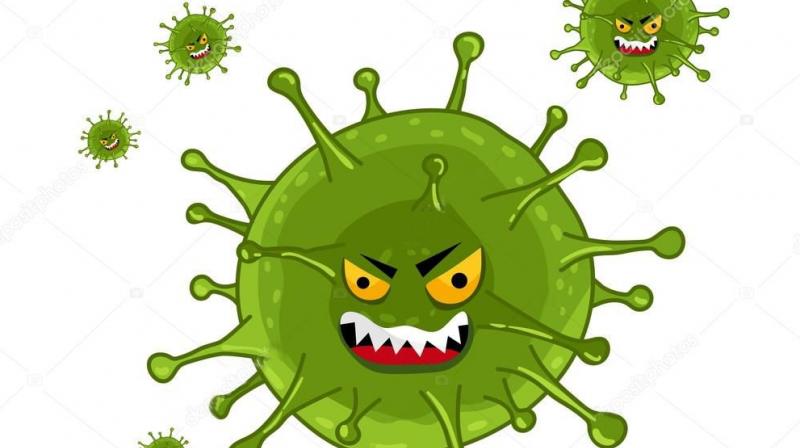Hyderabad: Flu cure still a pipe dream
Despite nearing century, vaccine against influenza still a far cry.

Hyderabad: It will be soon a century since the first influenza virus was discovered, yet their mutation continues to defy the efforts to find a vaccine to beat it universally.
Sans a permanent solution, scientists have to put out a vaccine every year to simply overcome bilateral pneumonia, a secondary disease originating from influenza or flu. Treatment of pneumonia requires a ventilator system which leads to costly bills.
Most people take at least two months to recover completely and the costs become a burden on the family. Due to these reasons, flu vaccines are administered every year to people who are immune-compromised. Vaccination ensures that the virus does not debilitate them so severely to cause multi-organ failure and death.
Dr K. Narsimulu, a senior professor of internal medicine, said, “The common types of influenza virus are Types A and B and C. The family of Type A viruses like H1N1, H2N2, H3N2 are found to be deadly. These viruses mutate and change their genetic composition, making them lethal within a short period of time. Once the body develops the immunity to deal with the virus, its genetic make-up changes and a fresh one takes form. For this reason, a vaccine is important to protect the immune-compromised.”
H1N1 caused Spanish flu in 1918 which was also called the ‘Big Fever’ and mother of all pandemics. The flu killed at least 50 million people — one-third of the world’s population at the time. The same H1N1 set of viruses struck in 2009, but it was termed as mild.
Scientists who have been chasing the strain of the 1918 H1N1 flu have reconstructed a genome and are working on the model of influenza virus to understand how it mutates and the manner in which it becomes virulent. The influenza viruses come from the intestines of birds and pigs.
A model mixing the two strains has been made to understand how the influenza virus behaves. Biologists, who are working on this project, said that every year the vaccine effectiveness reduces and that makes it important to look at building the immunity against the virus.
A senior pulmonologist said, on condition of anonymity, “The flu vaccine is proving to be only 60 per cent effective. In the last five years, the Centre for Disease Control has twice declared that the virus developed for the year had not been effective. It was also found that the vaccine developed didn’t match the type of virus which was active at that time. Given these discrepancies, it is becoming a major challenge to deal with the flu symptoms when they become virulent.”
A universal vaccine, which can be effective for a long period of time or just once, is currently the focus of intense scientific research. But given the variable nature of the viruses and their large families, the task ahead is truly challenging.
1918 | The flu epidemic started and spread. By 1919, it had claimed 50 million lives. The original make-up of the virus is still not known. Researchers are trying to reconstruct the extinct virus and understand the strain which played havoc in 1918. It is called the ‘Spanish Flu’ or the ‘Big fever’. The virus is suspected to have been H1N1.
1957 | The flu started in E.Asia and spread around the world, leading to 2 million deaths. The virus was found to be sub-type H2N2. It was called the ‘Asian Flu’.
1968 | The flu started in China and spread far and wide, claiming 4 million lives. The virus sub-type was H3N2. It was called the ‘Hong Kong Flu’ and lasted till 1970. This was the third pandemic of influenza virus.
2004 | The outbreak of H5N1 strain started in 1997, but it became virulent and spread fast in 2004 when it spread to 10 countries.
The flu surfaced in poultry industry of Vietnam and Thailand. It was lethal for birds in particular.
2009 | It is the same family of H1N1 virus which caused the ‘Spanish Flu’, say researchers. It is a different strain of virus where bird, pig and human viruses have reasserted and developed into a new viral strain.

